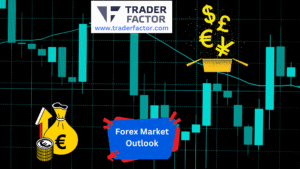The RBA increased its cash rate by an anticipated 25 basis points on Tuesday and hinted at further rate increases.
Following the RBA rate decision, the dollar’s rallying trend ends.
Bitcoin has been ranging between $22,800 and $23,000 over the last 24 hours. Despite a little decline, the token maintained its previous trading range and was still very close to its year-high.
As it works to reduce inflation, Australia’s central bank (RBA) has slapped borrowers with yet another increase in interest rates, bringing the record streak of increases to nine straight meetings.
It also says there will be “additional increases” in the future.

Table of Contents
ToggleHighlights On Governor Lowe’s Monetary Policy Decision
The Reserve Bank increased the cash rate by 25 basis points to 3.35% during its first board meeting of 2023, the highest level in just over ten years.
The majority of economists had anticipated such a rise.
Worldwide inflation is still very high. However, it is starting to moderate as a result of falling energy prices, the improvement of supply-chain issues, and the tightening of monetary policy.
However, it will take some time until inflation returns to the desired levels.
The forecast for the world economy is still gloomy, with below-average growth anticipated for this year and the following year.
CPI Inflation Rate
The CPI inflation rate in Australia reached 7.8% in the quarter ending in December, which is the highest level since 1990. Inflation in underlying terms was 6.9 percent, which was higher than anticipated.
Strong local demand is increasing the inflationary pressures in a variety of sectors of the economy, although global factors still account for a large portion of this high inflation.
This year, inflation is anticipated to decrease as a result of both global forces and the slower expansion of domestic demand.
According to the main prediction, CPI inflation will drop to 43.4 percent this year and to about 3 percent by mid-2025. The stability of the medium-term inflation expectations must be maintained.
CPI stands for Consumer Price Index, which is a measure of the average change over time in the prices paid by consumers for a basket of goods and services.
It is used to quantify inflation and as a tool to adjust financial and economic data for changes in the cost of living.
The CPI is calculated by the government and published regularly, usually monthly or quarterly.
Australia Economic Growth
Over 2022, the Australian economy increased rapidly. The main prediction has mostly stayed the same from three months ago; throughout 2023 and 2024, GDP growth is anticipated to decelerate to about 1 12%.
The increase in service spending that followed the removal of COVID limits has mostly peaked, and the tighter financial conditions will limit overall spending.
The labor market is still extremely tight. The unemployment rate has been constant at roughly 312% for the past few months, which is the lowest level since 1974.
Although both job openings and job advertisements are at very high levels, they have recently decreased slightly.
Despite some reports of recent improvement, many businesses still need help filling positions. It is anticipated that unemployment will rise when economic development slows.
According to the main prediction, the jobless rate will rise to 334 percent by the end of this year and 412 percent by the middle of 2025.
Due to the tight labor market and increased inflation, wage growth is likely to continue to pick up from the low rates of recent years.
The Board will continue to pay close attention to both the development of labor costs and the behavior of enterprises in setting prices in the period ahead since it is crucial to prevent a price-wages spiral.
High levels of unemployment can indicate a weak economy, which can reduce demand for a country’s currency, leading to a decrease in its value relative to other currencies.
Also, high levels of unemployment can lead to decreased consumer spending, which can also negatively impact the country’s economy and reduce demand for its currency.
Additionally, unemployment can lead to decreased government revenue, which can increase government debt, leading to a decrease in investor confidence in the country’s economy and its currency.
Monetary Policy Board’s Agenda
The Board is aware that monetary policy takes time to take effect and that mortgage payments have yet to fully benefit from the overall rise in interest rates.
The timing and magnitude of the anticipated decline in household spending are uncertain.
While some households have sizable financial reserves, others are feeling the pinch due to rising interest rates and living expenses.
The drop in home prices also has an impact on household balance sheets. How the global economy reacts to the sharp and sudden rise in interest rates worldwide is another area of uncertainty.
Restoring inflation to target is the Board’s top priority. High inflation makes it difficult for people to live their lives and harms the economy’s ability to function.
Additionally, it would be extremely expensive to lower inflation later if it were to become ingrained in people’s expectations.
The Board’s goal is to keep the economy stable and bring inflation back to a range of 2% to 3%, but there still needs to be a chance of a soft landing.
Home prices are a key component of a country’s economy and can impact the exchange rate of its currency.
Australian Dollar Surges Against Dollar
The dollar’s gains from earlier in the week slowed down on Tuesday, but it continued to trade near a one-month high as traders increased their projections of the U.S. Federal Reserve interest rate levels required to contain inflation.
After the Reserve Bank of Australia (RBA) announced its interest rate decision, the Australian dollar soared, jumping as much as 1% to an intraday high of $0.6952.
AUS/USD
The RBA concluded its February policy meeting by stating that core inflation had exceeded expectations and that higher rates would be required to guarantee that inflation returns to its target range of 2%–3%.
Forex Markets Updates: Pound, Kiwi, Yen, Yields
Markets in other parts of the world were regaining their composure after the shock of Friday’s US jobs report, which revealed that non-farm payrolls increased by an astonishing 517,000 in January, indicating a stubbornly strong labor market.
In earlier sessions, the news boosted the U.S. currency, though it gave back some of those gains in Tuesday’s Asian trading.
The report caught traders off guard who were betting on an impending stop in the Fed’s rate-hiking cycle.
Sterling dropped to a one-month low of $1.2006 in the previous session before last trading 0.27% higher at $1.2054.
The kiwi also increased by 0.29% to $0.6323, but it was still close to its one-month low of $0.6271 from Monday.
After falling to $1.0709 in the previous session, its lowest level since January 9, the euro rebounded 0.12% to $1.0739.
Due to increasing rate expectations, U.S. Treasury yields have increased; on Monday, the two-year yield hit a one-month high of 4.4930%. The most recent two-year yield was 4.4243%.
The benchmark 10-year yields last stood at 3.6193% after climbing to a four-week high of 3.6550% the previous session.
Market forecasts are for the Fed funds rate to rise just above 5.1% by June, according to futures pricing, compared to expectations of less than 5% prior to Friday’s jobs report.
The U.S. dollar index reached a close to one-month high of 103.76 on Monday due to the strengthening dollar, and it was last 0.15% lower at 103.45.
In other parts of Asia, the Japanese yen gained 0.3% to 132.24 per dollar but stayed stuck close to Monday’s one-month low of 132.90.
Data released on Tuesday revealed that real earnings in Japan increased in December for the first time in nine months.
However, it is still being determined whether pay increases will continue to support the nation’s economic recovery.
Is BTC Price Retesting $20K?
The four-hour chart of the price of bitcoin displays a distributive pattern that suggests a change in trend.
Start shorting BTC at a small dip of $23,215 with a target price of $21,269 to get started. A four-hour candlestick close above $23,373 will invalidate this bearish prognosis.
The bitcoin price supplied all the indicators needed to validate a distribution pattern.
This pattern develops following a rally and denotes a top, as stockholders who accumulated before or during the uptrend sell or otherwise disposed of their holdings.
On February 1 at $24,000, when the price of bitcoin surpassed the swing high set on January 29 at $23,966, would be the ideal time to go short.
This crucial liquidity run served as a turning point, and so far, BTC has lost almost 6.30% of its value.
BTC/USDT 4-hour chart
After Bitcoin price breaks through the $22,780 daily support level and turns the $22,277 support level into a resistance barrier, there will be another indication that a downturn is underway.
In such a scenario, BTC might decline to attempt the subsequent daily support at $21,269 once more. The large cryptocurrency might target the four-hour support level of around $20,847 if the selling pressure here continues.
The negative view is understandable from a technical standpoint, but investors should be aware that the $23,373 barrier needs to be turned into a support floor in order to reverse the bearish trend.
With this change in price, the bearish thesis will be refuted, and there may be a run-up to the next important mark at $23,496.
The psychological level of $25,000 needs to be decisively broken in order for the current surge to continue. This long-term confirmation in the price of Bitcoin might lead to a surge to $30,000.
Read: Powerful Smart Tools To Integrate Into Your Forex Trading Strategies In 2023
Disclaimer:
All information has been prepared by TraderFactor or partners. The information does not contain a record of TraderFactor or partner’s prices or an offer of or solicitation for a transaction in any financial instrument. No representation or warranty is given as to the accuracy or completeness of this information. Any material provided does not have regard to the specific investment objective and financial situation of any person who may read it. Past performance is not a reliable indicator of future performance.

















